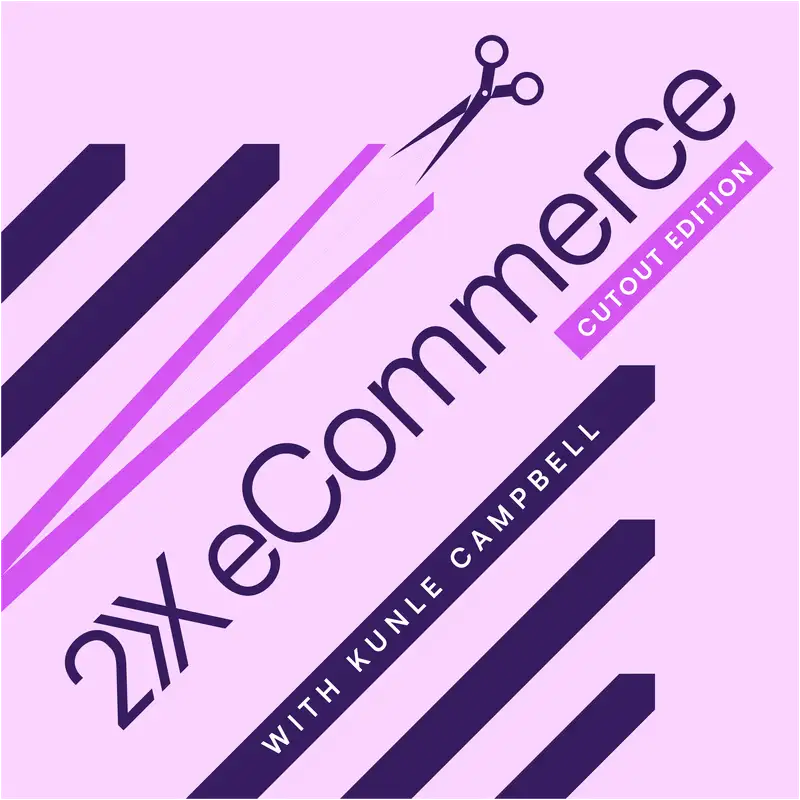Cutout 3: The 1.7-Second Rule: Capturing Mobile Shoppers Before They Swipe Away → Sabir Semerkant
Download MP3The 1.7-Second Rule: Capturing Mobile Shoppers Before They Swipe Away → Sabir Semerkant
===
[00:00:00] So mobile. most sites, most commerce gets done on mobile.
So if your web designer has a beautiful Mac, a gigantic screen Mac on their desktop, And they're designing a beautiful desktop website. It's completely irrelevant to e commerce sites, and for a lot of e commerce sites, 70%, a number like 70 percent of their revenue is coming from mobile.
30 percent comes from desktop and in some other ones, it's even higher mobile, mobile commerce, right? So that if you're not designing, especially in the U S I don't know where your content gets consumed to where your listeners are. But if you are in the United States, the number one platform you need to design your mobile commerce site for is iPhone, specifically iPhone, not just mobile phone iPhone specifically in the U.
S. If you're in Europe, you have to think about Android and Samsung as your platform, right? And some other markets, it's probably more [00:01:00] Android because of just access to Cheaper phones and stuff like that, right? And more access to google and google android ecosystem and stuff like that So you have to understand where your consumers are coming from you need to design primarily for that Device first and optimize it for that experience first.
Not that your site looks amazing on desktop You're looking at 30 percent of your revenue coming from your desktop. Why are you designing it for the desktop? It should be mobile first and desktop responsive, the opposite terms, not like mobile responsive, like a lot of people design these days, and that's the wrong thing to do.
I guess you, you need to also use like multi browse testing. There's, you could see it's in, in multiple browsers, right? For the mobile in the U. S. market, I would say first, make sure that your site works flawlessly for Safari because it's iPhone, right? Cause that's the app.
That's the web browser. That's pre installed on your phone, right? And then [00:02:00] secondarily, you can test it for other popular. Browsers like chrome and brave and other flavors off of chrome based and Firefox and stuff like that on the mobile phone. But primarily if it's coming from an iPhone, likely highly likely it's a safari browser.
So if your site does not is not compliant with Safari. It breaks. It doesn't pop up correctly. And things are too small, too big. You're expecting people to zoom in to look at things. Consumers get turned off of that. They move on, right? The more of those things you solve, the better that dimension is going to be.
Mhm.
You didn't fix your team. You didn't fix your content. Your storytelling is not up to par. Your brand positioning is not great. Your product pricing, you keep on couponing and promoting, and thinking that, Oh, if I keep on promoting, then it's raised to the bottom line, basically.
And the bottom line is very red, [00:03:00] unfortunately. First of all, very great precursor to the HD method. In. In eight sentences, could you describe the AD method? What are the key components in the AD method? Okay. So there are eight dimensions. So let's start with the first one, right? The very first one that I tackle is site optimization.
Performance optimization. That's the first dimension. So in, in that dimension, I look at and see literally from the consumer's perspective, if I were to engage with this site, would I buy? It's an eye opening statement, right? Because most people they believe in the mantra of the creative director, right?
The creative director says, oh, because of on branding, we need to do this and that and whatever, right? But the consumer doesn't really care about that. The consumer wants to [00:04:00] engage with your brand to buy, right? Literally, These consumers have their wallets in their hand with the credit card out. They want to buy from you And the anti commerce team, team members that you have they are working against the plan of Purchase and they end up isolating those people so that your bounce rate increases.
Your conversion rate is sub 1%, right? So that's the first thing that needs to be done. That's your store, right? And if the consumer doesn't get it, and when I say get it, the attention span of the current consumer in 2024, that's the year we're in right now, right? Is 1. 7 seconds. That's all. If it's swiped to the left.
Swipe to the right or swipe up 1. 7 seconds. That behavior has been perfected by Instagram Reels, by TikTok, by Amazon app. That's the reference point. That's the reference point you need to [00:05:00] implement. And if your performance of your site and your experience does not convey your messaging and your value, And within 1.
7 seconds, any number above that 1. 7 seconds, you're losing for every second, you're losing 30 percent conversion rate 30%. So when you think about just looking at that dimension, and if it's fixed and cleaned up, You can get tremendous growth from fixing that first dimension to start with, right? Because everything you do everything, whether you're asking influencers to come to your site, you're asking Google ads to send traffic to you, meta ads and Facebook and Tiktok and whatever social media, whatever you're doing at the end of the day.
They show up on your site to make that purchase, right? And if your site is not optimized at that level so that you're making, you keep on making [00:06:00] your point within 1. 7 seconds of attention, you're losing revenue, right? So that if you're showing a gigantic logo and it takes, I don't know, A minute to download because you want the highest res logo, your bounce rate is 99 percent on that site.
So it misses the mark. So the first I mentioned is performance optimization, and it has to do with your website, right? There are a lot of great tools you could use. There are some of them are freely available, like GT metrics is a great tool, right? You can pass your site through that and then it will give you a grade and it will tell you exactly what's wrong that you need to fix.
But that's just the technical side of it. But then you have to also think about dimension number two, which has to do with customer UX.
Creators and Guests



